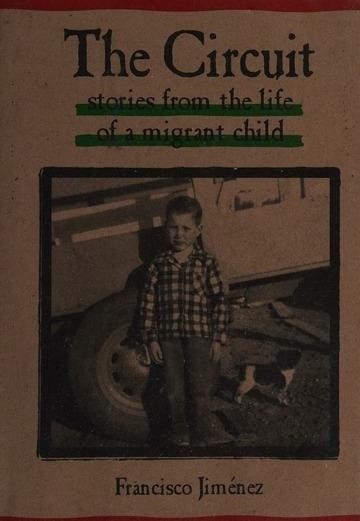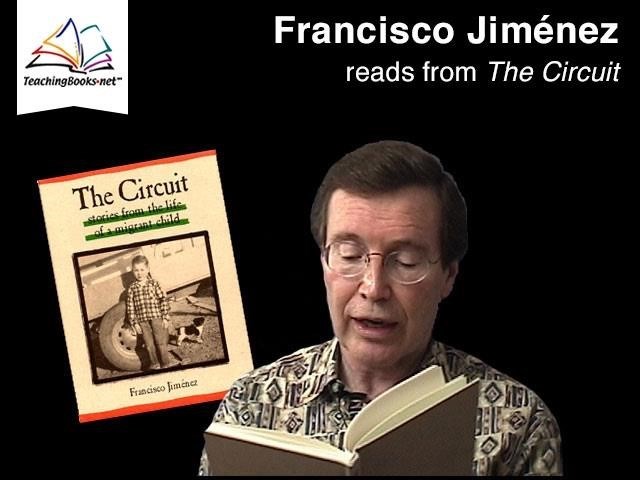The Circuit by Francisco Jiménez⁚ An Overview
The Circuit⁚ Stories from the Life of a Migrant Child is a poignant autobiographical collection by Francisco Jiménez. It details the struggles and triumphs of a young boy and his family as they migrate throughout California in search of agricultural work. The book is widely studied for its powerful portrayal of the migrant experience.
The Author and His Work
Francisco Jiménez, the author of The Circuit⁚ Stories from the Life of a Migrant Child, is a renowned Chicano writer whose work often reflects his personal experiences as a migrant worker. Born in Mexico, Jiménez immigrated to the United States with his family at a young age, experiencing firsthand the hardships and resilience required to navigate a life marked by constant relocation and economic instability. His autobiographical narrative, The Circuit, stands as a testament to the strength and unwavering bond within his family. The raw honesty and emotional depth of his writing resonate with readers, making it a powerful and enduring piece of literature.
Jiménez’s literary contributions extend beyond The Circuit. He has authored several other acclaimed books, including Breaking Through, Reaching Out, and Taking Hold, which form a compelling series chronicling his life journey. These works have earned him critical recognition and cemented his status as an important voice in Chicano literature, shedding light on the experiences of Mexican Americans and the challenges they face.
Jiménez’s writing style is characterized by its simplicity and directness, yet it carries a profound emotional weight. His ability to evoke vivid imagery and authentic emotions makes his stories both accessible and deeply moving, capturing the essence of the human spirit’s capacity for perseverance in the face of adversity. The impact of his work lies in its ability to foster empathy and understanding of the migrant experience.
The Story’s Central Theme⁚ Family and Migration
At the heart of The Circuit lies the interwoven theme of family and migration, powerfully illustrating the profound impact of constant movement on family dynamics and individual lives. The Jiménez family’s relentless pursuit of agricultural work necessitates frequent relocations, creating a challenging and unstable environment for young Panchito and his siblings. Despite the hardships, the narrative emphasizes the unwavering strength of familial bonds. The parents’ dedication to providing for their children, the siblings’ mutual support, and the shared experiences forging an unbreakable connection are central to the story’s emotional core.
The cyclical nature of their migration, the “circuit” itself, becomes a metaphor for the continuous struggle and adaptation required of migrant families. The constant uprooting and resettlement disrupt schooling, friendships, and a sense of belonging, yet the family endures, finding solace and strength in their shared experiences and unwavering commitment to one another. The narrative highlights how the family unit remains the cornerstone of resilience amidst adversity, providing emotional support and a sense of stability in an otherwise unpredictable world. This enduring bond becomes a testament to the power of family in the face of economic hardship and social displacement;
Key Characters and Their Roles
The narrative revolves around young Panchito, the author’s alter ego, whose experiences and observations drive the story. He acts as the primary narrator, offering a child’s-eye perspective on the hardships and triumphs of migrant life. His parents, Papa and Mama, represent the unwavering determination and resilience of migrant workers, tirelessly sacrificing their comfort and stability for their children’s future. Their love and dedication form the emotional bedrock of the family. Roberto, Panchito’s older brother, serves as a role model and confidante, providing support and companionship amidst the challenges of constant relocation.
Other characters, though less prominent, contribute to the narrative’s richness. The fellow migrant workers and their families create a sense of community and shared experience, highlighting the collective struggle and mutual support within the migrant population. Teachers and school officials represent the external world’s interaction with migrant children, sometimes demonstrating understanding and compassion, other times reflecting societal indifference or prejudice. These interactions showcase the complexities of integration and the challenges faced by migrant children in navigating the educational system.

Exploring the Narrative
Jiménez masterfully employs a series of interconnected short stories, each capturing a specific moment in the family’s journey. The narrative structure mirrors the cyclical nature of migrant life, emphasizing the constant movement and the emotional toll it takes.
Narrative Structure and Style
The Circuit stands out for its unique narrative structure, skillfully weaving together a series of interconnected short stories rather than presenting a single, continuous narrative. This fragmented approach mirrors the transient and often chaotic life of a migrant family, constantly moving from one location to another in search of work. Each story focuses on a specific event, experience, or period in young Panchito’s life, creating a mosaic that gradually reveals the bigger picture of his family’s journey. The episodic nature of the storytelling also allows for a deeper exploration of the themes of displacement, resilience, and the importance of family bonds.
Jiménez’s writing style is characterized by its simplicity and directness, reflecting the young narrator’s perspective. The language is unadorned yet powerful, conveying the emotional weight of the experiences described. The author’s use of vivid imagery and sensory details creates a strong sense of place and atmosphere, immersing the reader in the harsh realities of migrant life. This combination of structural innovation and stylistic clarity makes The Circuit a compelling and unforgettable read, effectively capturing the emotional depth and complexity of a family’s journey across the landscape of migration.
The Use of Imagery and Sensory Details
Francisco Jiménez masterfully employs imagery and sensory details to immerse the reader in the world of migrant farmworkers. His descriptions are not merely visual; they engage all the senses, creating a powerful and empathetic experience. The reader feels the scorching sun on their skin, smells the dust and the ripe fruits, hears the rhythmic sounds of farm labor, and even tastes the simple meals that sustain the family. For example, the constant presence of cardboard boxes, containing all the family’s possessions, becomes a powerful visual symbol of their transient existence, a recurring motif that underscores their constant movement and lack of stability.
The descriptions of the landscapes—the barren fields, the bustling towns, the stark labor camps—are equally evocative, painting vivid pictures of the environments the family inhabits. The sensory details are not just descriptive; they contribute to the emotional impact of the narrative. The hardships are not merely stated; they are felt through the palpable heat, the aching muscles, and the ever-present hunger. This immersive style is crucial in conveying the physical and emotional toll of migrant life, making the reader a more active participant in the family’s experiences and struggles. The sensory details elevate the narrative beyond a simple recounting of events, transforming it into a deeply felt and emotionally resonant experience.
Themes of Perseverance and Resilience
At the heart of The Circuit lies the unwavering perseverance and resilience of the Jiménez family. Faced with relentless hardship—poverty, discrimination, and the constant upheaval of migratory life—they endure with remarkable fortitude. The narrative doesn’t shy away from depicting the harsh realities of their situation⁚ the grueling work, the meager living conditions, and the constant threat of displacement. Yet, amidst these challenges, the family’s determination to provide for their children and maintain their sense of unity shines through. Their resilience is not simply a matter of enduring; it’s about adapting, finding strength in their shared experiences, and maintaining hope for a better future.
The young Francisco’s dedication to his education, despite the frequent school changes and the distractions of farm labor, exemplifies this theme. His determination to learn and succeed, even in the face of adversity, underscores the family’s commitment to upward mobility. This perseverance becomes a source of strength not only for Francisco but for the entire family. Their unwavering support for each other, their collective spirit in overcoming obstacles, and their refusal to succumb to despair are central to the book’s enduring power. The story becomes a testament to the human spirit’s capacity to overcome even the most formidable challenges.

Analyzing the Impact
The Circuit holds significant literary merit, impacting Chicano literature and prompting critical analysis. Its enduring legacy stems from its honest portrayal of the migrant experience and its exploration of themes of family, perseverance, and cultural identity.
The Circuit’s Significance in Chicano Literature
Francisco Jiménez’s The Circuit holds a prominent position within Chicano literature, significantly contributing to its landscape and expanding its thematic scope. The novel’s autobiographical nature provides an intimate and unflinching portrayal of the migrant experience, a subject often overlooked or marginalized in mainstream narratives. Jiménez’s evocative storytelling vividly captures the hardships faced by migrant workers, their resilience in the face of adversity, and their unwavering familial bonds. The work’s impact lies not just in its accurate depiction of poverty and displacement, but also in its celebration of cultural identity and the enduring spirit of the Chicano community. By giving voice to this often-silenced population, The Circuit has broadened the understanding of the challenges and triumphs of Mexican-American families. Its inclusion in numerous anthologies and its continued use in educational settings solidify its importance as a cornerstone of Chicano literature, fostering empathy and promoting crucial dialogues about social justice and immigration. The detailed descriptions of the family’s arduous journeys and the emotional toll of constant relocation resonate deeply with readers, offering a humanizing perspective on a complex social issue. The book’s lasting power stems from its ability to transcend its specific context and connect with broader themes of family, community, and the pursuit of the American Dream.
Critical Reception and Literary Analysis
The Circuit has garnered widespread critical acclaim for its powerful storytelling and unflinching portrayal of the migrant experience. Reviewers consistently praise Jiménez’s evocative prose, his ability to capture the emotional depth of his young protagonist, and the authenticity of his depiction of migrant life. Literary analyses often focus on the novel’s thematic richness, exploring the complexities of family, identity, and the pursuit of the American Dream within the context of systemic inequality. Scholars have examined the narrative’s structure, noting the effectiveness of the episodic structure in mirroring the fragmented nature of migrant life and the emotional impact of constant displacement. The use of sensory detail and vivid imagery is also frequently highlighted as a key element contributing to the book’s emotional power, immersing readers in the realities of poverty and hardship. Furthermore, critical discussions often explore the novel’s contribution to Chicano literature, its role in shaping understandings of the migrant experience, and its lasting impact on readers and scholars alike. The book’s enduring popularity and its continued relevance in educational settings speak to its lasting significance and its ability to connect with diverse audiences across generations.
The Book’s Enduring Legacy
The Circuit’s impact extends far beyond its initial publication. Its continued presence in school curricula across the United States speaks volumes about its enduring relevance in fostering discussions about immigration, social justice, and the resilience of the human spirit. The book’s accessibility and emotional resonance make it a powerful tool for promoting empathy and understanding among young readers. Its exploration of themes like family unity, perseverance, and the importance of education continue to resonate with diverse audiences, fostering critical thinking about social issues. The novel’s success in captivating readers while simultaneously serving as a valuable educational resource ensures its place in the literary canon. It has inspired countless essays, critical analyses, and classroom discussions, solidifying its status as a significant work of Chicano literature. Beyond its academic impact, The Circuit has touched the lives of countless individuals, connecting with readers on a personal level and leaving a lasting impression on their understanding of the migrant experience and the strength of the human spirit in the face of adversity. Its legacy is one of promoting empathy, understanding, and a deeper appreciation for the diverse tapestry of American life.





